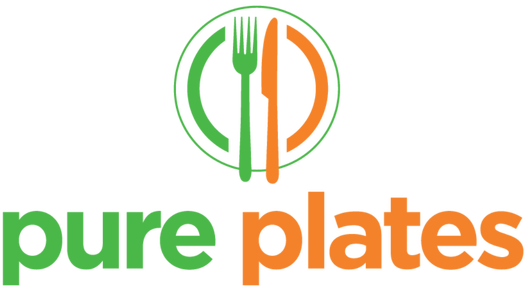Incorporating Whole Grains into Your Diet
At least half of the grains that we eat daily should be whole grains. While most Americans are getting enough grains in their diet, the majority are not getting enough whole grains. Whole grains are an important part of a healthy diet as they provide all three parts of the grain, include many important vitamins and minerals and are also linked with a lower risk of certain diseases.
What are whole grains?
Before we dive into the health benefits of whole grains, let’s begin with what whole grains are. Whole grains have all three parts of the grain kernel. This would include the germ, endosperm, and bran. The germ is the core of the grain. It is packed full with many nutrients such as vitamins and healthy fats. The endosperm is the middle layer that is full of starch. It supplies the energy in the grain and also contains a little bit of protein and vitamins. The bran is the hard outer layer of the grain. It contains almost all of the grain's fiber and also supplies important vitamins and minerals. Some of the beneficial nutrients in whole grains are the many B vitamins, vitamin E, and vitamin A. There are also many important minerals like iron, magnesium, and zinc.

Whole grains can be easily paired with a healthy fat, a protein source, and fruits or vegetable to complete a meal. They are also great to include in recipes. There are tons of recipes online that incorporate whole grains into really simple meals. Pure Plates also offers plenty of whole grain options so you can make at least half of your grain intake be from whole grains! Pure Plates takes care of the pairing for you by creating well balanced meals so you don’t have to worry about that ;)
Whole Grains vs Refined Grains
So, what makes a whole grain different from a refined grain? As mentioned above, whole grains include all three parts of the grain, the germ, endosperm, and bran. Refined grains only contain the endosperm. This means that they are missing out on some of those key nutrients that come from the germ and the bran. These grains are processed in order to remove these parts of the grain. Some examples of refined grains would be white rice, white bread, and white flour.
Now what about enriched or fortified grains? An enriched grain is a refined grain that has had some vitamins and minerals added back in after they were lost. A fortified grain is a refined grain that has nutrients added in that are not normally in the grain. Being fortified can also mean that the nutrients that are normally there are just increased in amount. While there are some added benefits to eating enriched or fortified grains, the best option is to eat whole grains.

Benefits of Whole Grains
There are many benefits to eating whole grains in relation to disease. They decrease the risk for heart disease. They also lower a person’s risk for type 2 diabetes as well as a person’s chance of having a stroke. They can lower the risk for cancer, specifically in the large intestine or rectum.
There are also many important vitamins and minerals in whole grains as well as a high fiber content. These things can all help keep a person healthy by lowering a person’s bad cholesterol levels and increasing the good cholesterol. Whole grains also can help lower blood pressure as well as insulin levels. They can keep a person feeling full longer which is helpful fo maintaining a healthy weight or when trying to lose weight.
Cooking Whole Grains
Well, here is a list of some of the different types of whole grains.
- Long-grain brown rice
- Steel-cut oats
- Quinoa
- Bulgur
- Millet
Some of our favorite whole grain meals at Pure Plates include:
Other Ways To Sneak In Whole Grains
There are also other ways to add more whole grains into the diet. Some of the everyday foods that you are eating can be easily swapped with the whole grain version, like swapping normal pasta for whole wheat pasta. 100% whole wheat bread can be substituted for white bread. When baking muffins or pancakes, whole wheat flour can be used instead of white.
Looking for these easy swaps in your day-to-day diet can be a great way to start adding in more whole grains.
If you are interested in learning more about whole grains and incorporating nutrient dense foods into your diet, consider choosing Pure Plates to help provide you with nourishing meals, straight to your door!

